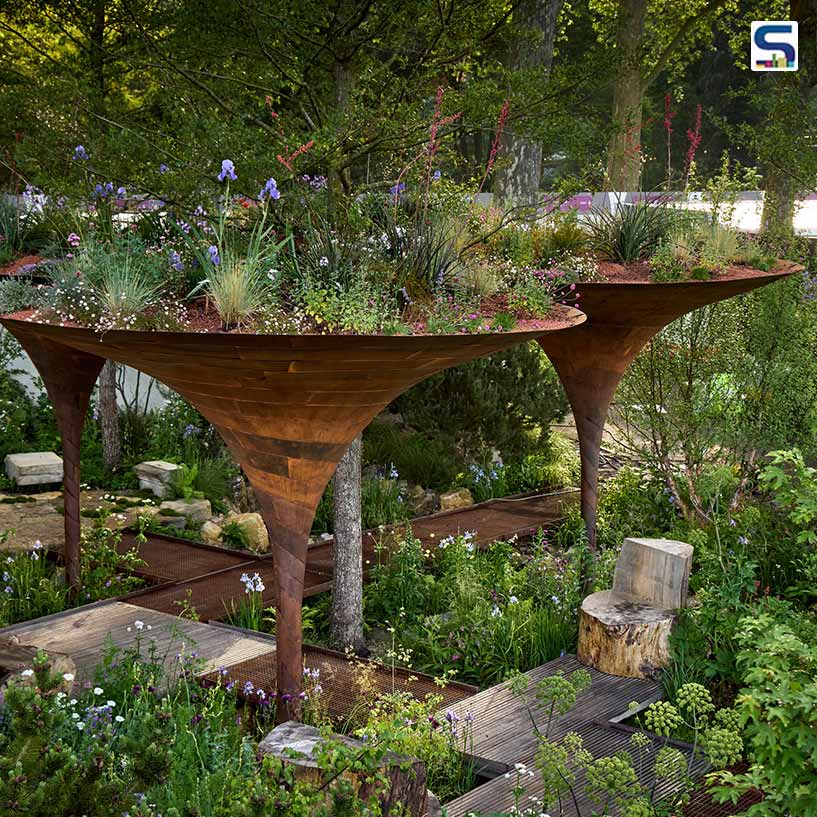
At the Chelsea Flower Show in London, the WaterAid garden featured a striking weathering-steel pavilion with fluid curves inspired by water movement. Designed by Studio Weave and landscape designer Tom Massey for the international nonprofit WaterAid, the garden showcased sustainable water management with colorful plants and a pavilion that collected rainwater for dry periods. The pavilion, made from thin steel strips around bent rebar, was both structurally efficient and aesthetically appealing, with components 3D modeled and precisely cut. Read more on SURFACE REPORTER (SR):
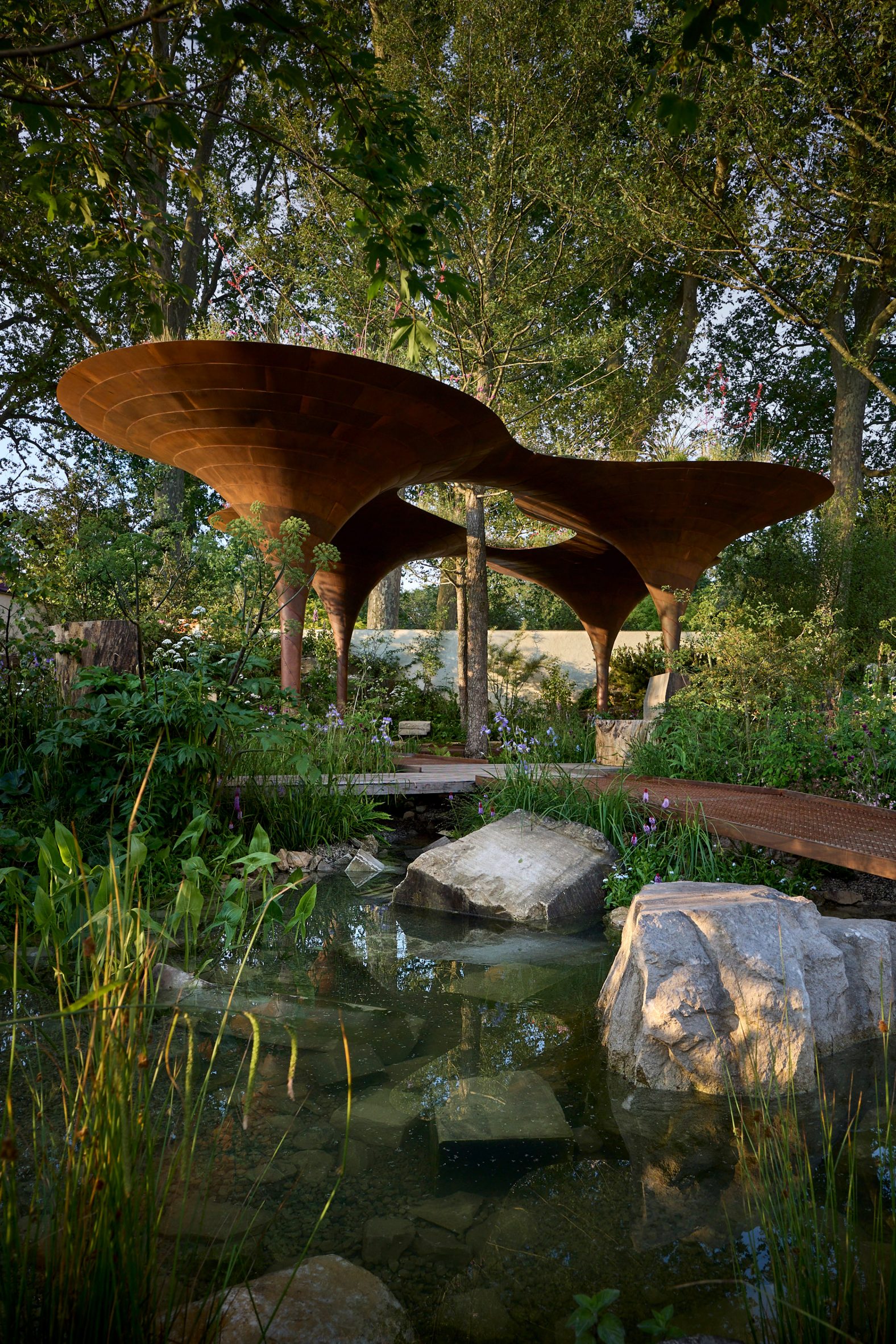 The plants are ordered from drought-tolerant arid species on the upper levels to water-loving aquatic plants further down. The aim is to showcase diverse design ideas and raise awareness of climate change impacts like droughts and flooding. The central pavilion is designed to harvest rainfall for later irrigation.
The plants are ordered from drought-tolerant arid species on the upper levels to water-loving aquatic plants further down. The aim is to showcase diverse design ideas and raise awareness of climate change impacts like droughts and flooding. The central pavilion is designed to harvest rainfall for later irrigation.
Innovative Steel Structure
The structure, made from thin steel strips around bent rebar, was described as "akin to dressmaking." Slender columns fanned out to form a large, shaded roof.
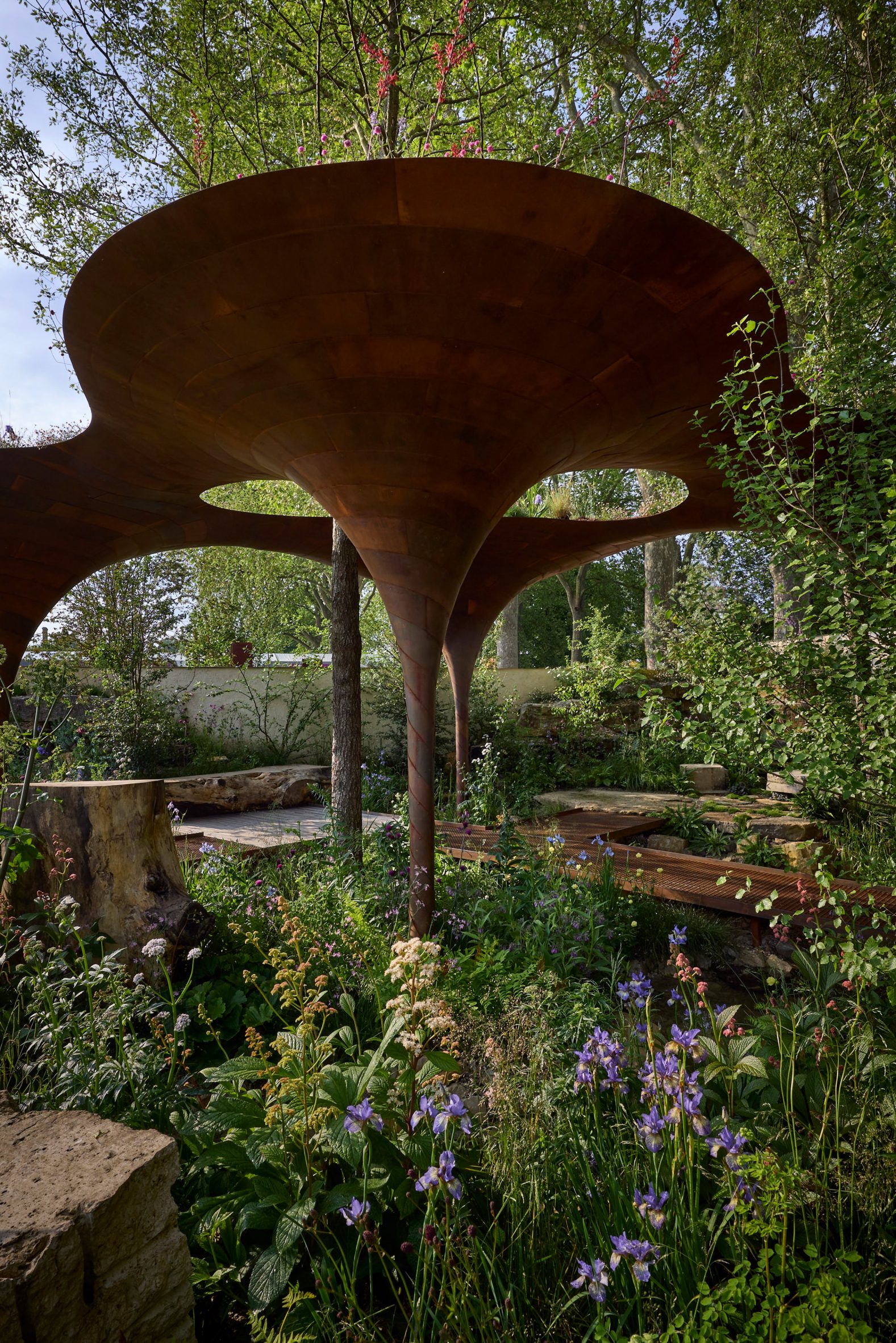 Rainwater from the planted roof passed through a triple-layered medium into a storage tank, highlighting WaterAid's use of affordable rainwater collection in areas prone to water shortages.
Rainwater from the planted roof passed through a triple-layered medium into a storage tank, highlighting WaterAid's use of affordable rainwater collection in areas prone to water shortages.
Sunlight and Structural Efficiency
Curved roof openings ensured sunlight reached all planted areas for at least one or two hours daily. The form was structurally efficient and strong enough to support the soil depth on the roof.
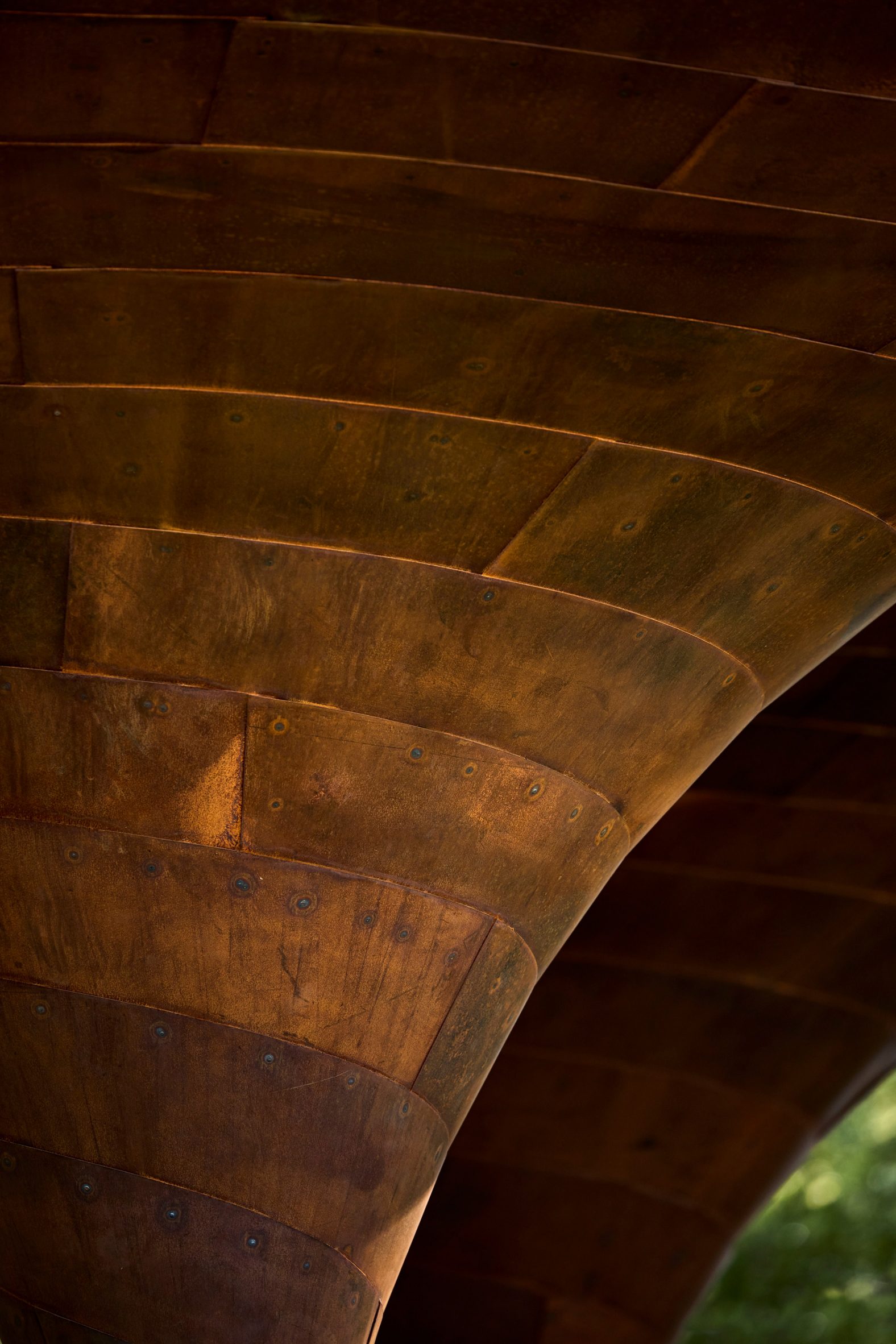 Weathering steel was chosen for its strength, durability, and aesthetic appeal.
Weathering steel was chosen for its strength, durability, and aesthetic appeal.
Precision and Sustainability
All components were 3D modeled, with each of the 299 steel sheets numbered and laser cut to millimeter precision.
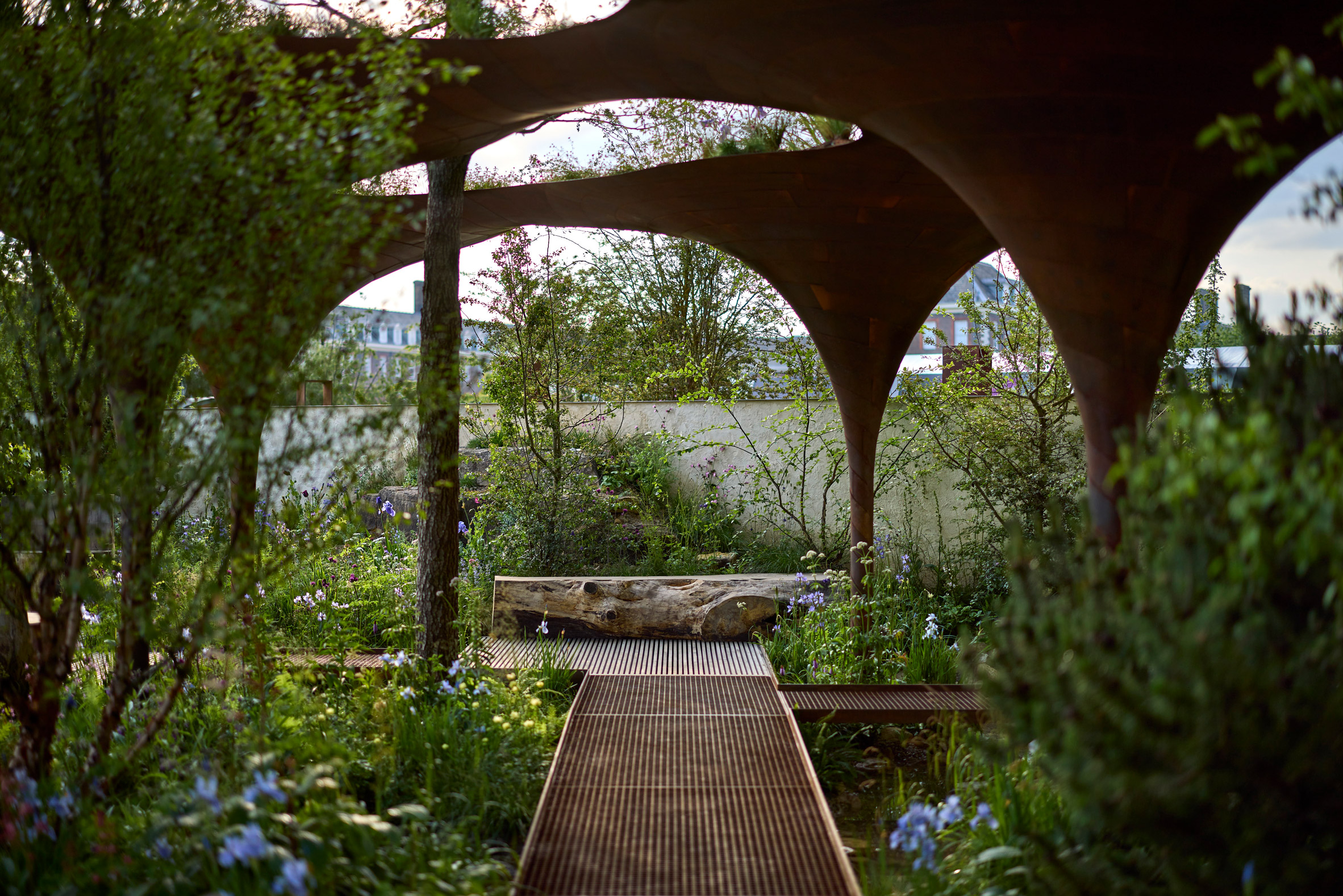 Reclaimed or repurposed materials were used for the garden's walkways and seating to minimize the carbon footprint. Designer Sebastian Cox created permeable beech timber seating to allow water to pass through.
Reclaimed or repurposed materials were used for the garden's walkways and seating to minimize the carbon footprint. Designer Sebastian Cox created permeable beech timber seating to allow water to pass through.
Resilient and Adaptive Planting
The garden featured colorful, resilient species chosen for their ability to handle varying rainfall. Lower areas had denser, wetter plants, while upper levels were sparser and drier. Plants included water violet, an indicator of water quality, and alder trees, which improve soil health by absorbing nitrogen and heavy metals.

The WaterAid garden, awarded an RHS Gold Medal, marked Ahn's first and Massey's fourth Chelsea Flower Show. It will be relocated to northern England to educate the public on rainwater collection.
Photo Courtesy: Alister Thorpe